Abstract
The purpose of this study was to determine the effectiveness and associated problems of emergency intubation in 605 injured infants and children admitted to the Children's Hospital of Pittsburgh in 1987. We identified 63 patients (10.4%) undergoing endotracheal intubation at the scene of injury, at a referring hospital or in our emergency department. Injuries were to the head (90.5%), abdomen (12.7%), face (11.1%), chest (6.3%), neck (3.2%); or were orthopedic (19%) or multiple (39.7%). Indications for intubation included coma (74.6%), shock (28.6%), apnea (22.2%), and airway obstruction (3.2%). Of 16 complications (25.4%), 13 were immediately life threatening: right mainstem intubation (5), massive barotrauma (2), failure of adequate preoxygenation (2), esophageal intubation (1), attempt at nasotracheal intubation in an open facial fracture (1), and extubation during transport (1). Three were late complications: vocal cord paresis (2) and subglottic stenosis (1). Airway complications led to PO2 less than 90 mm Hg in 7 of 12 on first ABG, compared to 9 of 44 in uncomplicated cases (p less than 0.05). Intubation attempts at the scene of injury were more often multiple, unsuccessful, and associated with airway complications. All four complication-associated fatalities were life-threatening scene complications. Nearly one half (44.4%, 28 of 63) had one of the following problems in respiratory management: major airway complication, PaO2 less than 90, or PaCO2 greater than 45 on either the first or second ABG after arrival at our emergency department. Head injury with coma is the most common setting for emergency intubation. Airway complications are common, and are more frequent in treatment attempt at the scene. Despite endotracheal intubation, injured children in our series remain at high risk for hypoxemia, elevated arterial PCO2, and major airway complications, all of which contribute to secondary brain injury.
Full text
PDF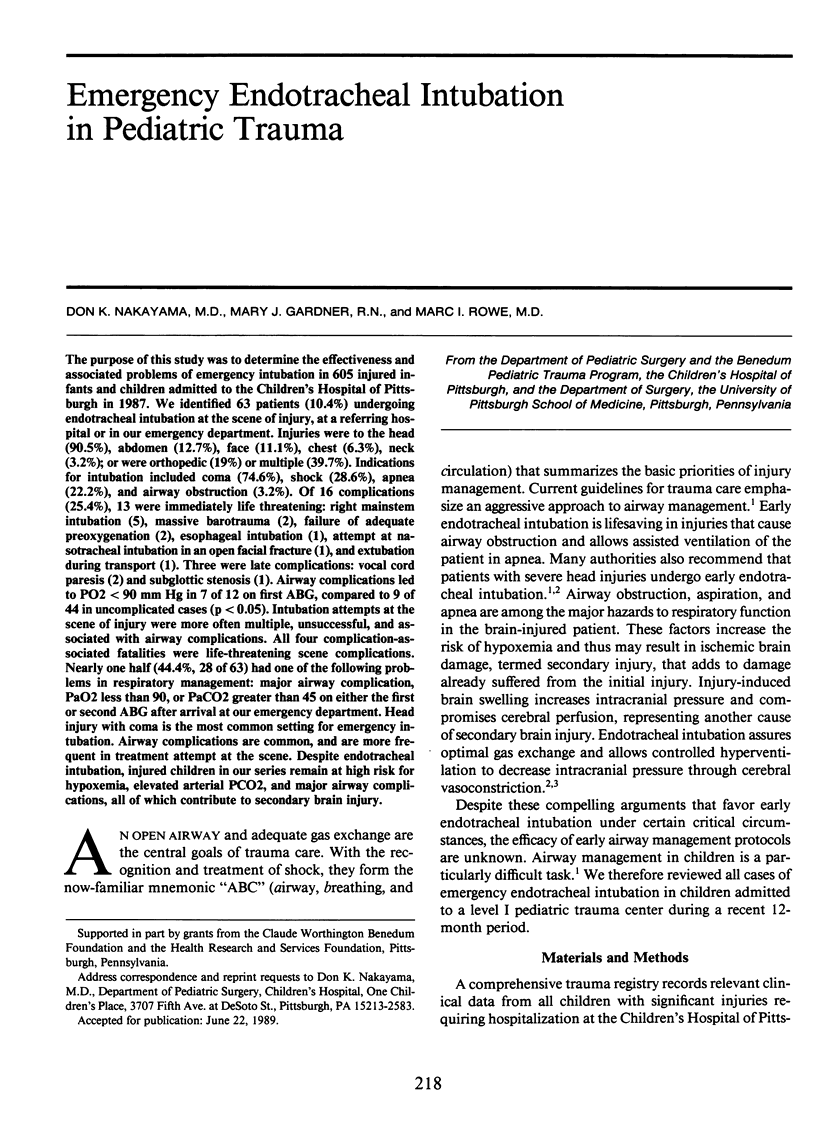
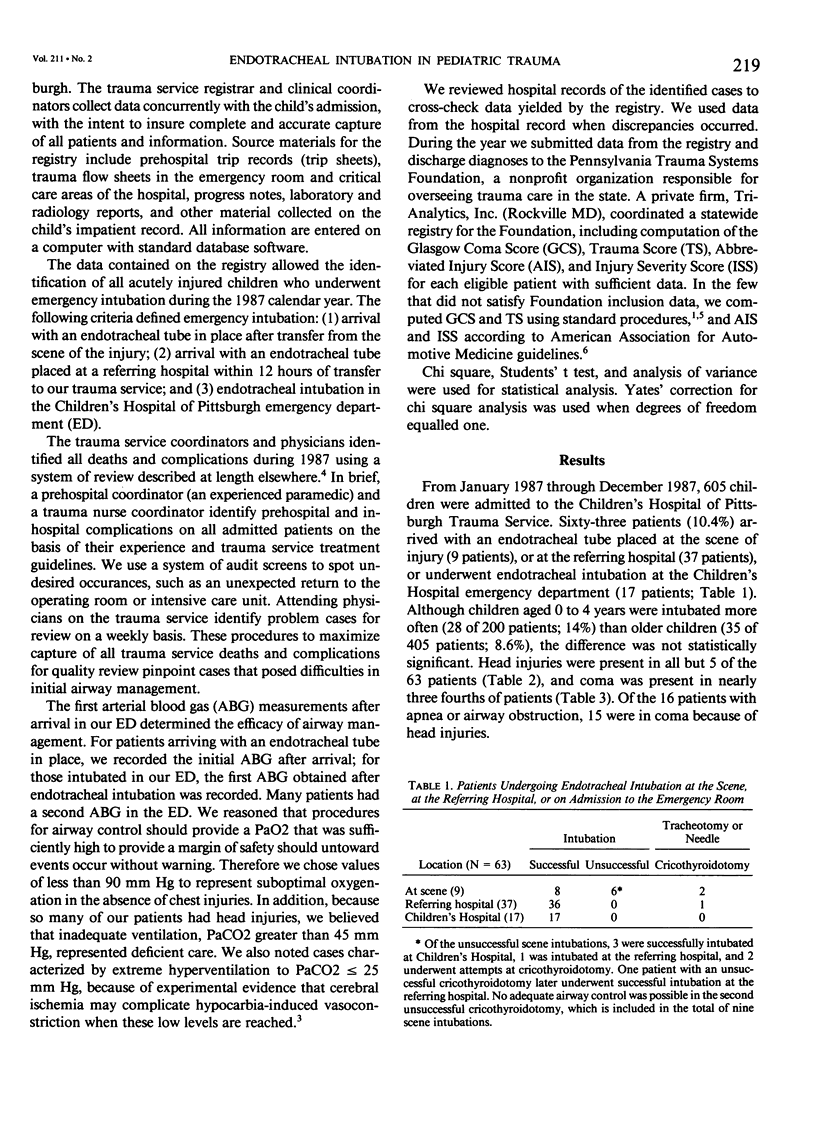

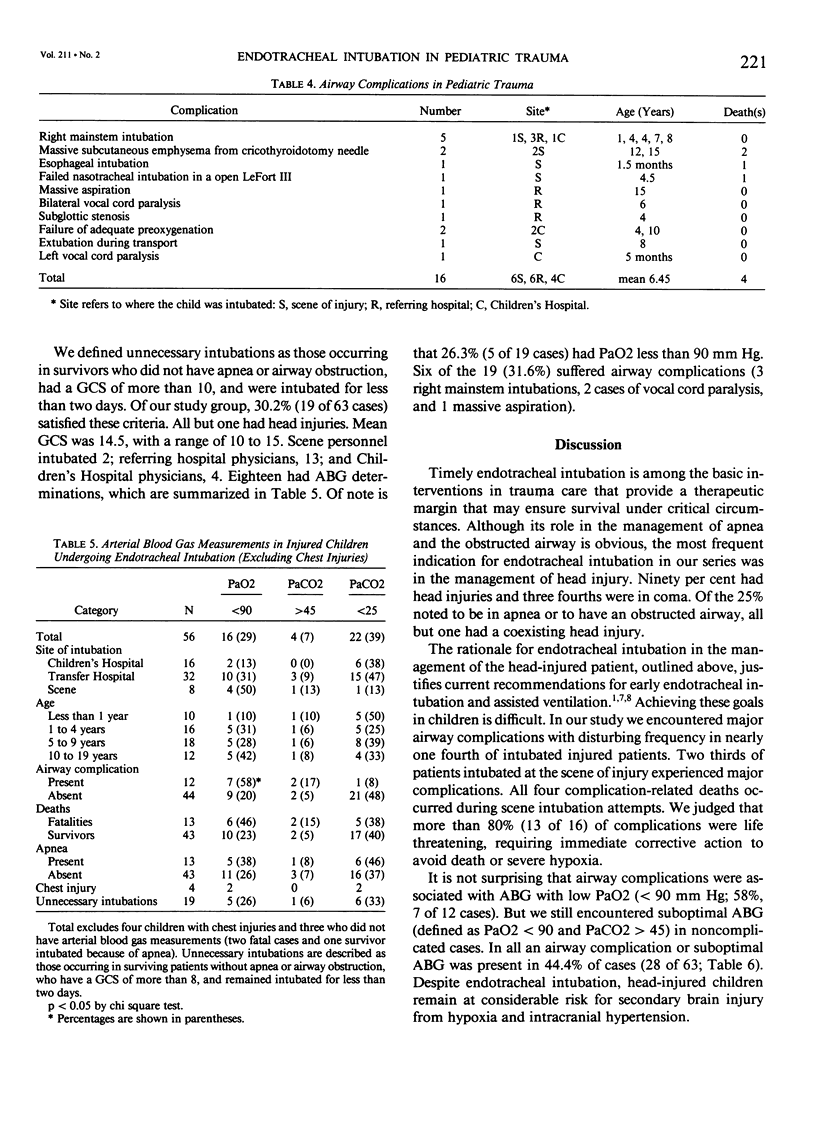
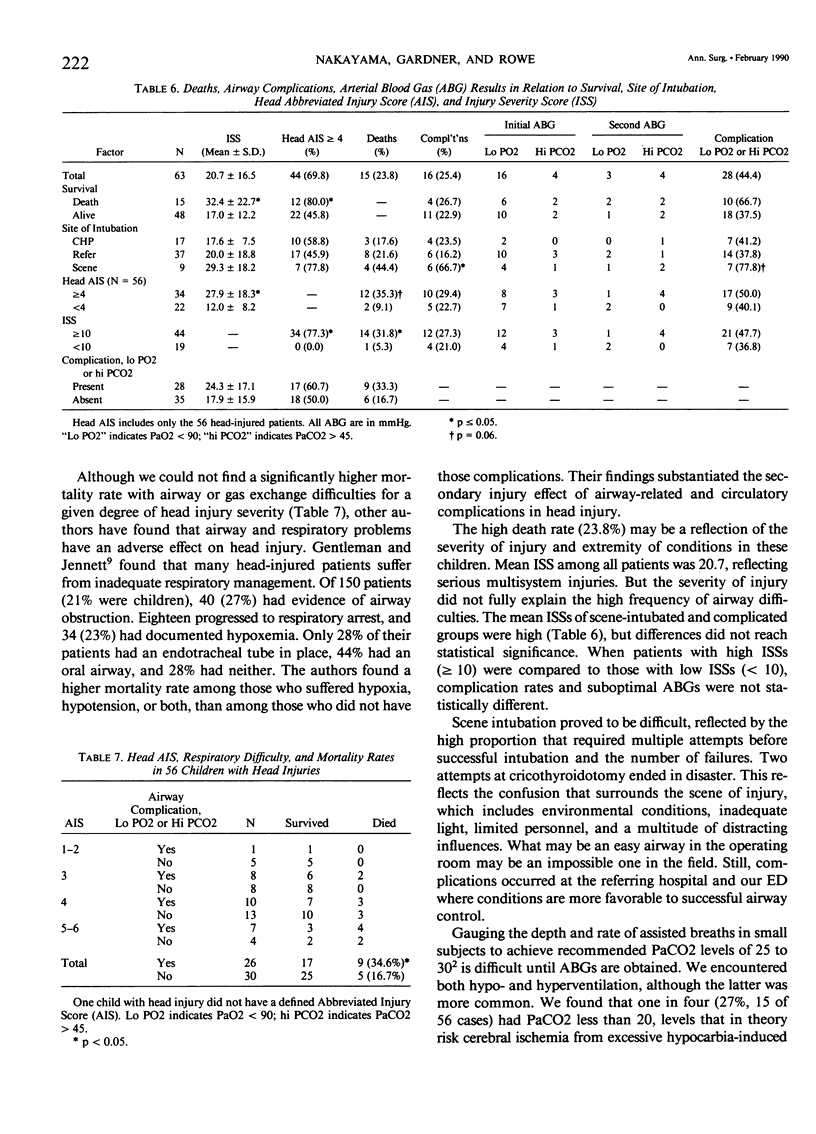
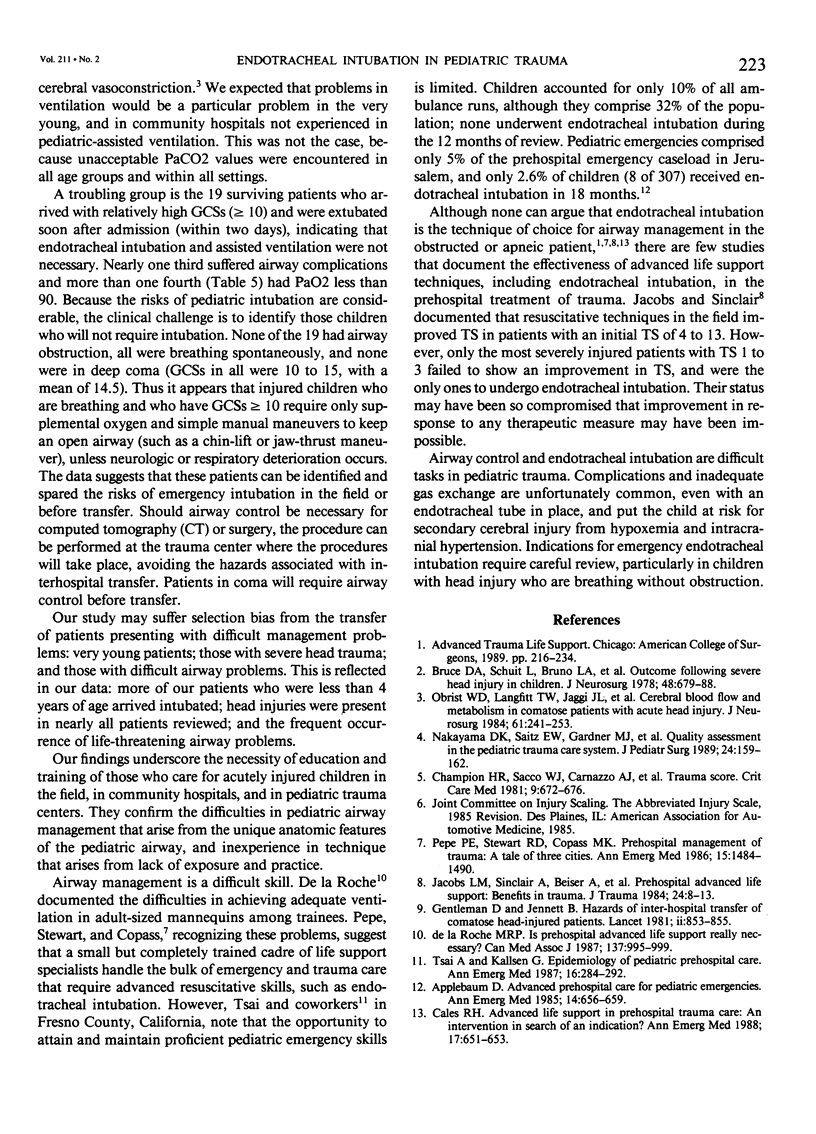
Selected References
These references are in PubMed. This may not be the complete list of references from this article.
- Applebaum D. Advanced prehospital care for pediatric emergencies. Ann Emerg Med. 1985 Jul;14(7):656–659. doi: 10.1016/s0196-0644(85)80882-9. [DOI] [PubMed] [Google Scholar]
- Bruce D. A., Schut L., Bruno L. A., Wood J. H., Sutton L. N. Outcome following severe head injuries in children. J Neurosurg. 1978 May;48(5):679–688. doi: 10.3171/jns.1978.48.5.0679. [DOI] [PubMed] [Google Scholar]
- Cales R. H. Advanced life support in prehospital trauma care: an intervention in search of an indication? Ann Emerg Med. 1988 Jun;17(6):651–653. doi: 10.1016/s0196-0644(88)80412-8. [DOI] [PubMed] [Google Scholar]
- Champion H. R., Sacco W. J., Carnazzo A. J., Copes W., Fouty W. J. Trauma score. Crit Care Med. 1981 Sep;9(9):672–676. doi: 10.1097/00003246-198109000-00015. [DOI] [PubMed] [Google Scholar]
- Gentleman D., Jennett B. Hazards of inter-hospital transfer of comatose head-injured patients. Lancet. 1981 Oct 17;2(8251):853–854. doi: 10.1016/s0140-6736(81)91115-6. [DOI] [PubMed] [Google Scholar]
- Jacobs L. M., Sinclair A., Beiser A., D'Agostino R. B. Prehospital advanced life support: benefits in trauma. J Trauma. 1984 Jan;24(1):8–13. doi: 10.1097/00005373-198401000-00002. [DOI] [PubMed] [Google Scholar]
- Nakayama D. K., Saitz E. W., Gardner M. J., Kompare E., Guzik E., Rowe M. I. Quality assessment in the pediatric trauma care system. J Pediatr Surg. 1989 Feb;24(2):159–162. doi: 10.1016/s0022-3468(89)80238-6. [DOI] [PubMed] [Google Scholar]
- Obrist W. D., Langfitt T. W., Jaggi J. L., Cruz J., Gennarelli T. A. Cerebral blood flow and metabolism in comatose patients with acute head injury. Relationship to intracranial hypertension. J Neurosurg. 1984 Aug;61(2):241–253. doi: 10.3171/jns.1984.61.2.0241. [DOI] [PubMed] [Google Scholar]
- Pepe P. E., Stewart R. D., Copass M. K. Prehospital management of trauma: a tale of three cities. Ann Emerg Med. 1986 Dec;15(12):1484–1490. doi: 10.1016/s0196-0644(86)80949-0. [DOI] [PubMed] [Google Scholar]
- Tsai A., Kallsen G. Epidemiology of pediatric prehospital care. Ann Emerg Med. 1987 Mar;16(3):284–292. doi: 10.1016/s0196-0644(87)80173-7. [DOI] [PubMed] [Google Scholar]
- de la Roche M. R. Is prehospital advanced life support really necessary? CMAJ. 1987 Dec 1;137(11):995–999. [PMC free article] [PubMed] [Google Scholar]


